Liverpool Football Club was formed in 1892 after a dispute between Everton and the owner of Anfield resulted in a split and formation of a new club and Everton’s move to Goodison Park.
It all began with Everton
Everton FC was formed in 1878 for local youngsters by a minister from St Domingo Methodist Chapel. The team was called St Domingo’s FC for the first year, but interest beyond the confines of the Chapel prompted a name change to Everton. They originally played on an open pitch in the newly laid out Stanley Park. The team attracted large crowds and in 1882 moved to donated land at Priory Road but were asked to leave due to the large and noisy crowds. At some point in its early history Brewer John Houlding, who was attracted to Everton since its Stanley Park days, became president. In 1884 he orchestrated a move to Anfield renting from his friend John Orrell. Everton FC built proper stands and one year after they moved John Houlding bought Anfield from his friend for some £6,000.
He rented it to the football club for a very modest interest rate of just 1.66% per annum. In 1888 Everton became a founder member of the Football League. Houlding then raised the interest rate to 4% and lent the club £2000 for ground improvements at a rate of 5% (market value). Earlier attempts to raise money by public subscription had failed so John Houlding’s money made purchase of the site and development of the ground possible. In 1890-1 Everton FC won the football league.
So who was John Houlding?
John Houlding (1833-1902) was a self-made man; hotel proprietor and brewer (Houlding’s Sparkling Ales). He was a local Tory dignatory and councilor for Everton – the city’s most populous ward. He would become Lord Mayor of Liverpool in 1897-8. He was an Orangeman and a Freemason. He played a key role in the foundation of both teams. He owned the Sandon Hotel which was used as the club’s HQ and changing area on matchdays.
The dispute begins …
John Orrell had sold his land to Houlding in 1885 but there was a stipulation that the perimeter of the land belonging to his uncle should be left free to allow for construction of an access road in the future. However, Everton FC had erected a covered stand on the plot. John Orrell announced that he wanted to build the access road. Hence Everton either needed to destroy the stand or compensate Orrell.
This dilemma revealed some major differences in opinion about the appropriate governance structures and communal role of the club. On the oneside members expected Houlding as landlord and president to negotiate compensation with Orrell. Houlding favoured the flotation of the club as a limited company (a modern idea at the time) with money raised from share sales used to purchase the site from himself and Orrell with a mixed cash and mortgage arrangement. Houlding argued this would secure the site and further revenue could be gained through the opening of an athletics track. In September 1891 the scheme was approved by the Executive Commitee but an Extraordinary General Meeting was held later in the month and the majority voted it down.
John Houlding’s opponents accused him of seeking to exploit the club’s difficulties by protecting the value of his investment at a time of low land prices. Bypassing Houlding, the Executive Committee rejected incorporation, negotiated a new long term tenancy with Orrell and asked Houlding to accept reduced rent and the loss of the right to nominate executive committee members. He did not agree. At a meeting of the Board held without him they voted to move to Goodison. This led to members of Houlding’s camp registering “Everton Football Club and Athletic Ground Company, Limited” at Companies House. J Houlding was one of the shareholders. Worried about losing the club, a quick dash by the anti-Houlding majority to see the FA resulted in the newly formed company not being recognised and not being allowed to take on the players or future fixtures of Everton.
At a meeting of the Board the signatories of the new company were accused of acting in an underhand way and without authority. Hence they were removed from the board including Houlding being removed as President. Whilst the prospectus of Houlding was briefly discussed; a move to Goodison Park was again agreed. It was also announced to much approval that Everton’s new ground would not sell alcoholic refreshments reflecting the division between the increasingly popular temperance movement and Conservative interests which were often linked to the brewing industry (personified by John Houlding the Conservative brewer). A majority of the board were tee-total and keen temperance campaigners.
In response Houlding changed the name of the company to “Liverpool Football Club and Athletic Grounds Company Limited” and adopted the Anfield Road site.
Hence Everton FC continued to be representative of its many members whilst Liverpool FC started life with a much narrower set of financial interests in charge. However, the profiteering motives associated to Houlding are not necessarily borne out by the facts – he invested large amounts of money at lower than market rates for much of Everton FC’s early years.
A tale of two clubs
In April 1892 it was agreed that Everton FC would be elected to the FA and Liverpool FC made an application to join the Lancashire League.
John Houlding then took legal action against Everton FC in particular in relation to the stands remaining on his land. Eventually in May 1892 a settlement was brokered by the FA – Everton FC was awarded £250 for the stands.
Money, money, money
Liverpool Football Club and Athletic Grounds Company Limited was formed with capital of £15,000 including a 5,000 share issue of £1 each. The company purchased the ground from John Houlding and Mr Orrell for £9,237 but left mortgages totaling £5000 so the balance could be used for working capital.
Hence the club was able to scout for excellent players right from the start. In order to not get a ban from the Association they mainly sought players in Scotland. When they did, legally, approach players in England their detractors were quick to organise a de facto ban even though no fault was found.
So Liverpool FC started life with a professional squad being paid high wages for the time unlike Everton FC which started its life with local players. But local players were given the opportunity to play in the reserves.
Liverpool FC Reserves 1892-3 in the Liverpool and District League
The Reserve Team consisted of mainly local players, occasionally strengthened by professionals who could be spared from the first team. The Liverpool FC Reserves were entered into the Liverpool and District League.
The cost to watch Liverpool and District League matches was 3d (as opposed to 4d for the first team fixtures) and season tickets ranged from 7s 6d for uncovered stands to 21s 0d for reserved stands.
Philip or Phil Kelly was a player for the Liverpool FC Reserves in its very first season … here are a few of the newspaper reports and one very rare programme I have been able to find that mention him. On the programme which is for Whiston v Liverpool Reserve on Saturday 10th December 1892 you can see his name in the bottom formation on the left wing.
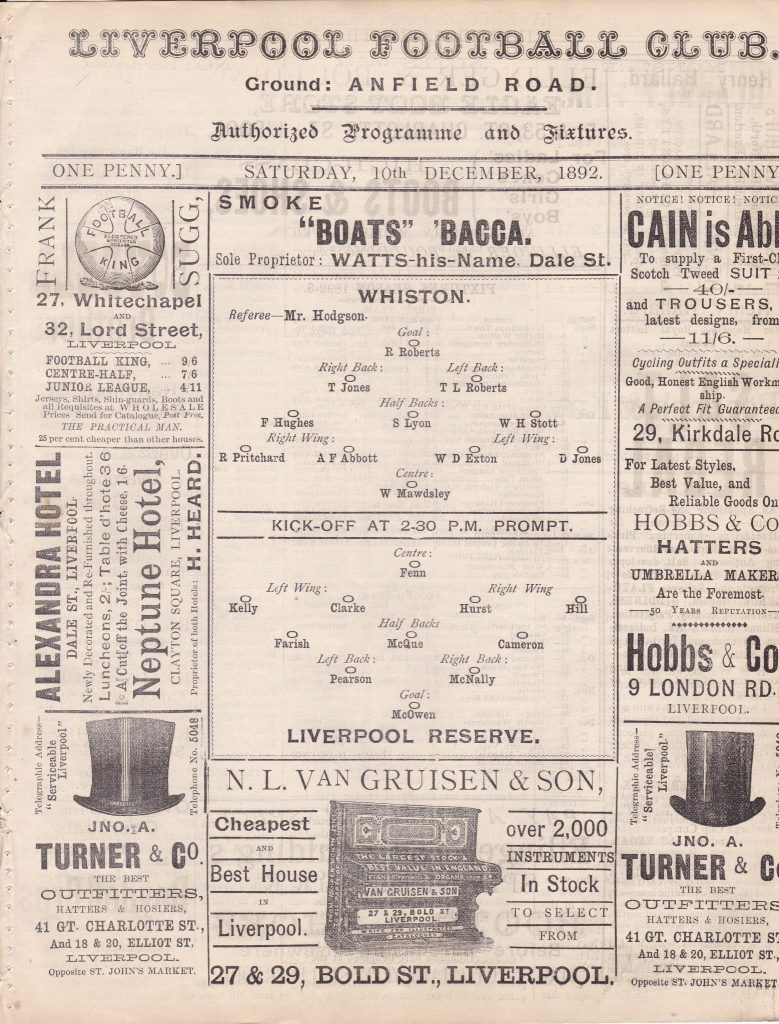
The Liverpool Football Echo
Saturday February 25 1893
Whiston v Liverpool Reserve
“Played on the ground of the former, before a good gate. Liverpool kicked off and Kelly immediately scored, the referee not allowing offside, which was justly claimed. From the restart they scored in the same manner, but this time the whistle did its duty. Continuing the homesters decidedly held the advantage and M. Owen had an anxious time. A couple of corners to Whiston were conceded by Pearson, but were nicely cleared. A very unsatisfactory decision by the referee led to a second point being notched by Kelly. The homesters played up pluckily against their more weighty opponents, but found the defence of Pearson and M’Nally very strong. Play tamed down considerably towards the interval when Liverpool led by 2 goals to nil.”
The Liverpool Football Echo
Saturday February 4 1893
Edge Hill v Liverpool Reserve
“Fine weather favoured this match which was brought off at Grange-Terrace this afternoon before a good attendance. Richardson started on behalf of Edge Hill, the visiting centre intervened and passed to the right. Hands relieved, Gerrard and O’Rourke transferring the scene of play. M’Nally eventually cleared them out, the Liverpool quintet again advancing. Clarke and Hill each having shorts, Austin cleverly robbed the visiting right wing pair, Spencer and Stretton getting to close quarters. Pearson checked and sent to the left, Kelly sending across the goalmouth, but the right wing failed to reach the leather. Several exciting incidents then occurred in the vicinity of the Edge Hill goal, and Worgan scored for Liverpool from out of a scrimmage. The visitors were having considerably the best of the argument, Broley negotiating a good short by Hill. Richardson led the van from about half way, but the ball was worked over the line. M’Nally had a difficult pair to tackle, Gerrard on one occasion getting in a capital centre, although M’Owen was not called upon. Cameron pulled up the Edge Hill centre, a smart run on the left resulting in a second goal for Liverpool. Kelly this time steering through and Broley making no effort to stop the shot. Half time score Liverpool 2, Edge Hill 0.
Final result – Liverpool 6 goals, Edge Hill 0.”
The Liverpool Football Echo
Saturday March 18 1893
Stanley v Liverpool Reserve
“This match took place at Walton Stiles this afternoon. Stanley started with the wind in their favour, and after a short passage at arms in midfield, the left wing raced away. They did not go far, however, as M’Nally returned the leather to safe quarters. Kelly and Clarke were then in evidence, but the ball eventually worked behind. Cameron checked an awkward movement on the part of Woodside. Maxwell sending back again, but Dick was not troubled. The Liverpool quintet again advanced and Worgan beat Treanor after about seven minutes play. The play of the homesters improved considerably after this, Kennedy and Stafford on their respective wings putting in a lot of useful work. Hill executed a pretty run along the right, passing all opposition, Clarke shooting wide. Kelly then essayed a long one, which Maxwell looked after. M’Nally cleverly bringing up the left wing in a dangerous position. Aided by the wind, Stanley attacked strongly, but the efforts of their front rank were almost invariably frustrated by the splendid defence of the Liverpool men. The home right wing secured subsequent to some clever exchanges, and Stafford equalised the score with a good shot the score at half time being 1 goal each.”
Liverpool Daily Post
Saturday April 1 1893
Liverpool Reserves v Walton Breck
“The return match between the above teams took place on the ground of the latter, Belmontstiles. Liverpool were well represented, but Walton Breck had to play some substitutes. Liverpool kicked off but the ball was quickly returned by McFarland. Woods made play up the right, passing to the centre. ‘Hands’against Brompton bringing the move to an end. This gave the visitors an advantage as the home forwards got possession, ran nearly up, Pearson intervening just in time. The Reserve had then a chance at the other end, but Kelly’s shot went behind. A few minutes later however, the visitors again rushed down, and Morgan shot past, Wheeler drawing first blood for Liverpool. The Breck rushed away from the centre, Wood making a gallant attempt, but being hampered he could not get in his shot and the leather went over. Liverpool then took up the play, and as the result of a combined attack, Kelly scored with an easy shot. The visitors had rather the rest of the play after this, and pressed their opponents severely, and the Breck goal had some marvelous escapes. At length the home forward broke away, Brompton taking the ball up in fine style, passing to Hope who, unfortunately, shot too high. Woods got possession, and dribbled up and centred finely, but his effort was nullified through some informality, and the ball was brought back. The Breck goal had another life from a short from Hurst and then Brompton got the leather from a throw in, his shot being finely met by M’Keown. The rest of this half was in favour of Liverpool but nothing further was done and at halftime the score was – Liverpool Reserve 2 goals, Walton Breck nil.
Final Results – Liverpool Reserve 2 goals, Walton Breck 1.”
Liverpool Reserves v Earlestown
“LIVERPOOL AND DISTRICT LEAGUE
The return match between the above took place this afternoon at Anfield, in dull weather. J Lee kicked off for Earlestown, and after some midfield play a good concerted movement was made by the home team, but Clarke overran the ball, and sent it behind. Returning, however, the same player forced Hall to concede a corner from a fine header. After another fruitless corner to the Liverpudlians the Earlestown, forwards broke away, but ‘hands’ stopped their progress and from the free kick the visitors’ goal had a narrow escape. A good run down was then made by the visitors, but M’Nally cleared nicely from J Lee. the homesters when attacked, and then Kelly sent in a splendid shot, which Hall saved at the expense of a barren corner. Liverpool pressed for some time, but a most stubborn defence prevented them from scoring. A spirited onslaught was next made by the visitors, but a foul against Conway again spoiled their efforts. Another corner fell to Liverpool as the result of a combined rush but proved barren. Earlestown ran down, and J Siddeley shot right into Swinton’s (the Liverpool goalkeeper) hands, who threw out splendidly, and the homesters got down to the other end. Peet returned the ball to midfield, but Morgan got hold and ran up, and after some play in front of the visitors’ goal Kelly scored with a beauty. A minute later Cameron scored a second goal for Liverpool, and shortly afterwards Hill missed a splendid chance from Kelly’s pass by kicking wide. Half-time result – Liverpool Reserve 2 goals Earlestown nil.
After resumption, Liverpool put on great pressure, and though frequent shots were sent in, no opening could be found. Earlestown then played up strongly and after a strong attack had been repulsed by Swinton and Pearson, Peet kicked in strongly from the half line, and J Lee shot through, thus scoring the first point for Earlestown. The visitors tried hard to draw level, and the play became fast and furious, and at times rather rough, the referee having to caution both sides. The rest of the game was keenly contested.”
Liverpool FC 1892-93 in the Lancashire League
The original Liverpool FC team of 1892/3.
But Philip Kelly did not just play for the reserves he also played for the first team. The first game I can find evidence of was a friendly, but he also played three times for the first team in their very first season in the Lancashire League.
Liverpool Mercury
September 30 1892
Liverpool v Queen of the South Wanderers
“Last evening Liverpool had the Dumfries team, Queen of the South Wanderers, as their visitors to Anfield. Owing to the weather being dull and showery, the attendance would not number more than 800. …
Teams:
Liverpool: Sydney Ross, Andre Hannah, Alec Dick, McLaughlan, Joe McQue, James McBride, Thomas Wylie, John Cameron, John Miller, Malcolm McVean, Phil Kelly”
Liverpool won 1-0 whilst Philip was listed in the news report it did not mention his performance.
The matches he played in the Lancashire League were:
26 November 1892 Rossendale U v Liverpool FC won 0-2 (Miller, McBride)
16 March 1893 Liverpool FC v Manchester Fairfield won 5-0
(Miller (2), McLean, Wylie, H McQueen)
15 April 1893 Liverpool FC v Southport Central draw 1-1 (Miller)
The only match report I have been able to find that mentions him is for the Manchester Fairfield match.
Liverpool Daily Post
Friday March 17 1893
Liverpool v Manchester Fairfield
“Fairfield took a couple of points out of West Manchester on Saturday last, and as the first named club has recently strengthened its ranks, a fairly interesting game was anticipated at Anfield last night. Ross still being on the sick list M M’Queen was entrusted with the custodian’s duty. Kelly, of the reserve, taking the place of Cameron on the inside left. The visitors were two men short at the time appointed for the start. Fairfield started, a strong wind blowing across the ground. The three visiting forwards were soon in Liverpool territory, but Hannah cleared them out. LIverpool working up to the right, when, on a free kick, falling to the homeside, one of the Fairfield backs put the leather inside the net. The visitors now had their full team, but could make no headway against the home halves, a throw-in on the right giving Miller a chance which was beautifully utilised. Some pretty passing was now indulged in by the home front rank, a cross from the left giving M’Vean a chance, but he headed over the touchline. Platt, James and Campbell now put in some good work for the visitors, but could do nothing at close quarters, M’Lean getting in a clearing kick, the home left wing [Kelly] racing off and forcing a couple of corners before the visiting defenders could obtain relief. A foul in front of goal gave Liverpool another free kick. M’Lean again being successful with the place. Fairfield attempted a breakaway from centre, but M’Que stopped their progress, the homesters at once making tracks for Slater, M’Bride sending well in, this shot and a regular trimmer from Miller each being got rid of by Bennett. Handford and Egan made several plucky efforts to get through the home defence, but found Hannah and M’Que too good, M’Queen only once handling the leather. Fouls were now frequent on each side, no advantage securing to either from the free kicks, though Slater’s goal had several narrow escapes. From a good clearance by T Handford, the Fairfield left wing were enabled to attack, Platt meeting a cross, and just topping the bar with a grand shot. Liverpool had somewhat the best of the play to the interval, when the score was:- Liverpool 3 goals, Fairfield nil. On restarting, play ruled even for about twenty minutes. Wyllie then getting a shot past Slater, H M’Queen adding a fifth goal ten minutes from the finish, which arrived with the score 5 to nil in favour of Liverpool, the visitors being outplayed at every point. Teams:-
LIVERPOOL – M M’Queen, goal; Hannah and M’Lean, backs; M’Cartney, M’Que and M’Bryde, half backs; Wyllie, M’Vean, Miller, Kelly and H M’Queen, forwards.
FAIRFIELD – Slater, goal; Better and Handford, backs; Whatmough, Campbell and Stuart, half backs; Platt, James Handford, Egan and Doughty, forwards.”
Phil Kelly’s football was cut short by a leg/knee injury which family lore says was due to him being attacked by two other players towards the end of the season. I have a recollection that this was at the Southport game. The Southport game was unusual in that the referee did not turn up and so the two teams agreed for a local man to take on the responsibility.
Football: A Lasting Passion
Despite his injury Phil continued to be involved in football throughout his life. He was a trainer for various amateur teams and into his late seventies he remained a talent spotter for Liverpool South FC.
He is in the following two photos (look for the x above his head and the towel on his shoulder). In the first he is with West Toxteth Labour AFC, in the second with Africa Royal FC.
Africa Royal FC was originally formed by the Africa Oil Mills import-export company which was set up during the industrial revolution. The club was certainly in existence from 1904 – any earlier history is lost. Their nickname was the “Steamship Boys”. African Royal initially played in the Liverpool & District League – the same one that the Liverpool Reserves and Philip Kelly had played in. They finished runners up to Prescott Wireworks. But they joined many other main clubs and joined the West Cheshire League for the 1906-7 season. Africa Royal were the most significant team in South Liverpool and took on the mantle from the earlier South Liverpool which had folded a decade earlier.
On February 16 1907 they drew 1-1 with Tranmere Rovers in the Liverpool and District Shield final at the neutral Docks Station Ground. The gate takings were £20 representing an attendance of between 1,500-2,000 people. Tranmere Rovers were in the Combination which was a higher football league. On April 24th they met again at Goodison and African Royal won 1-0 to win the Shield. The photo above is this Shield winning team. The ball beneath the footballers foot next to the Shield shows the date 1906-7 and there is Philip Kelly on the right hand side.
Africa Royal’s ground was on Grafton Street, not far from where Philip Kelly had been living in Pitt Street or from his house in South Street.
All information on Africa Royal and Liverpool South FC is from the excellent Rest in Pieces South Liverpool FC 1894-1994 by Hyder Jawad.
Sources
playupliverpool.com
liverweb.org.uk
https://www.liverpoolecho.co.uk/sport/other-sport/amateur-sport/football-historian-peter-lupson-sheds-3438828
Rest in Pieces South Liverpool FC 1894-1994 by Hyder Jawad
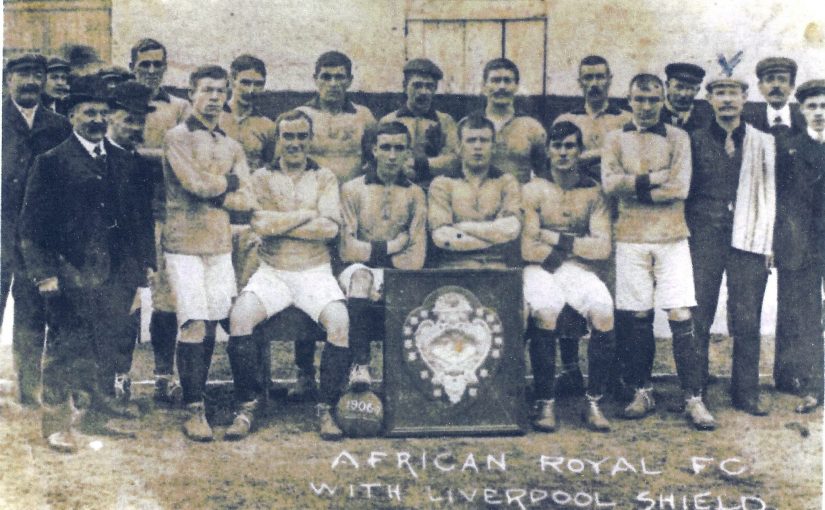
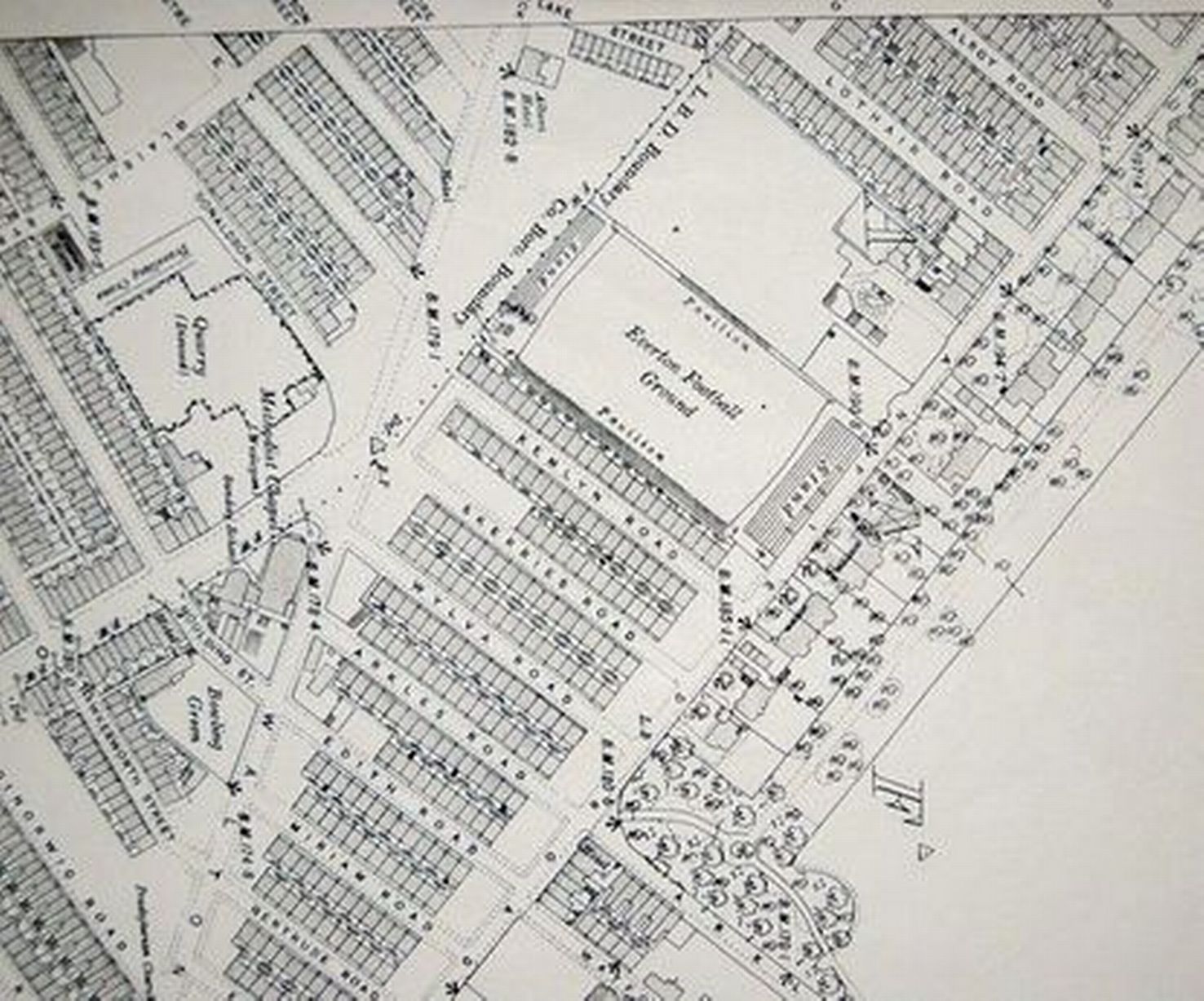
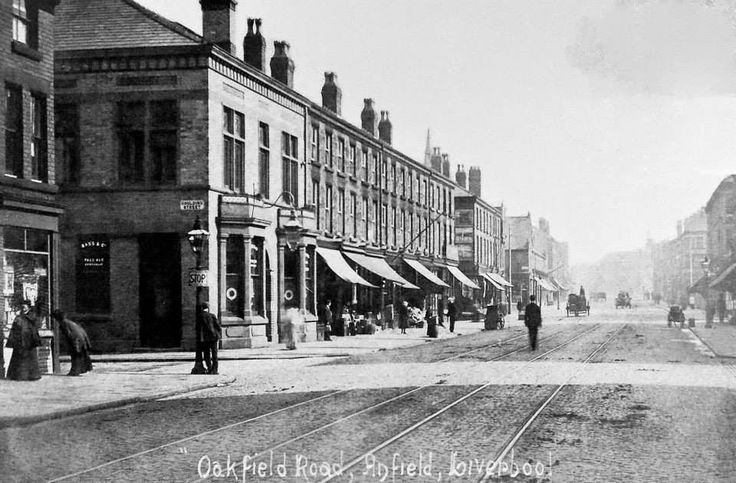
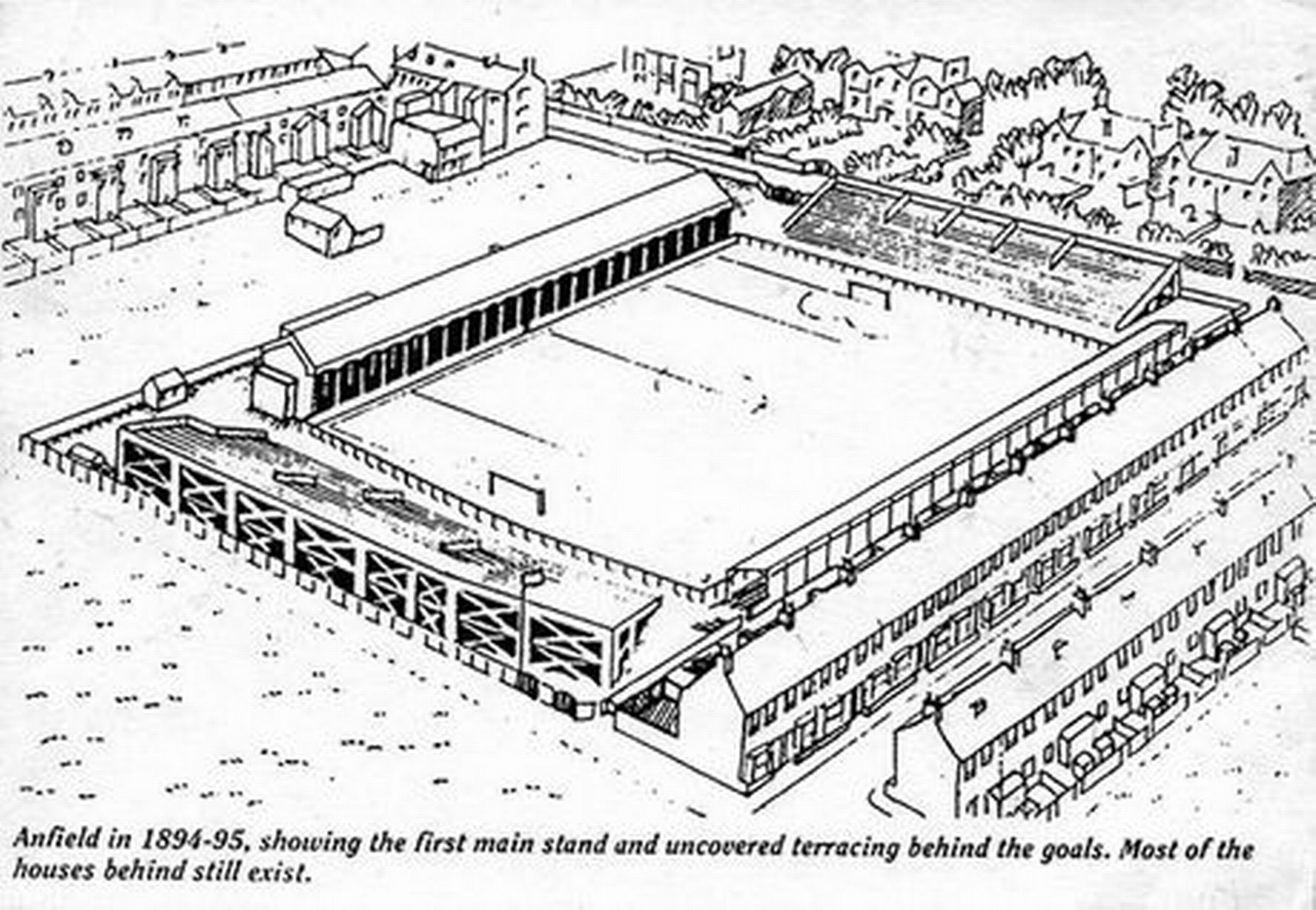
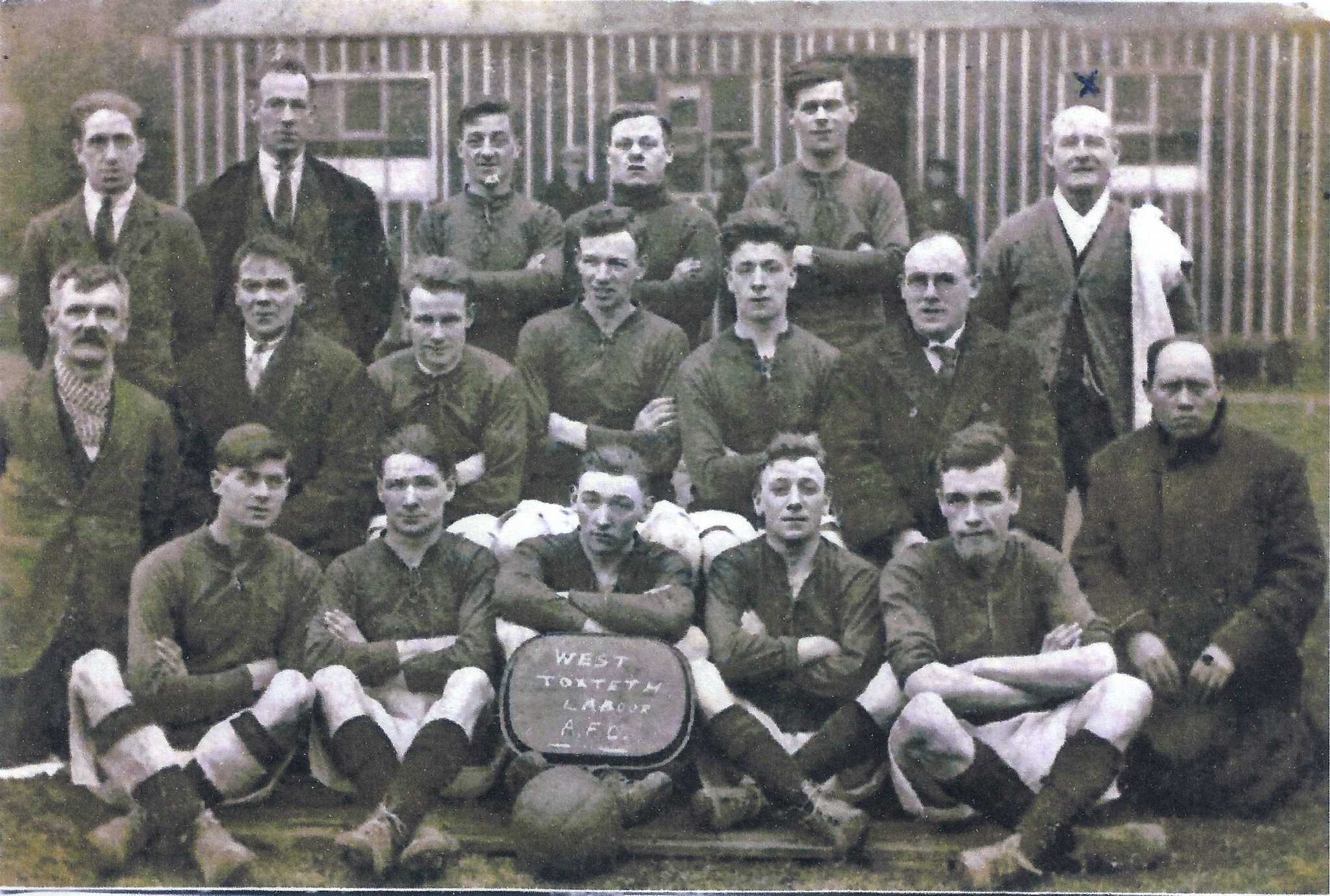
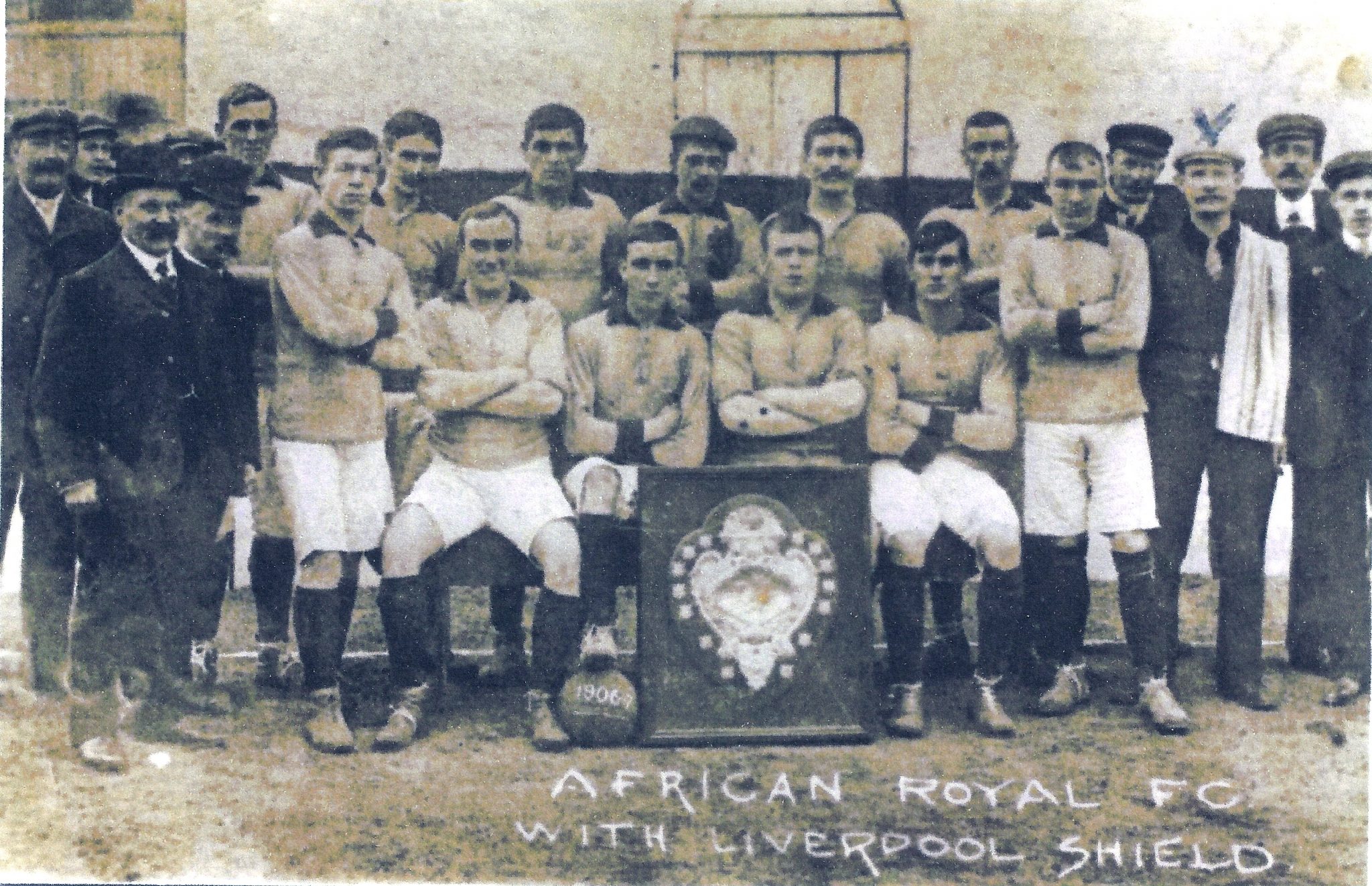
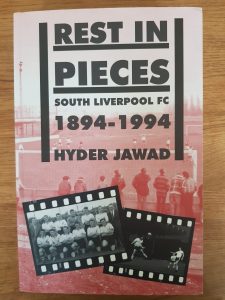
Great to read this. Phil was my great grandfather and my elder brother Philip was named after him. I saw some more references to Phil playing for the first team in the book, ‘The Team of All the Macs’ – by Alan Wilson. This team was the most famous in early Anfield history and got the name because most of the players were Irish or Scots. It wasn’t glory stuff as, although it appears he was the stand out player and regular goal scorer in the reserve side, he was new to that level and was injured before he could prove himself. I live near Reading now, but still follow the Reds obsessively on TV and get to watch a game at Anfield most years. I love how the team has developed under Jurgen Klopp.